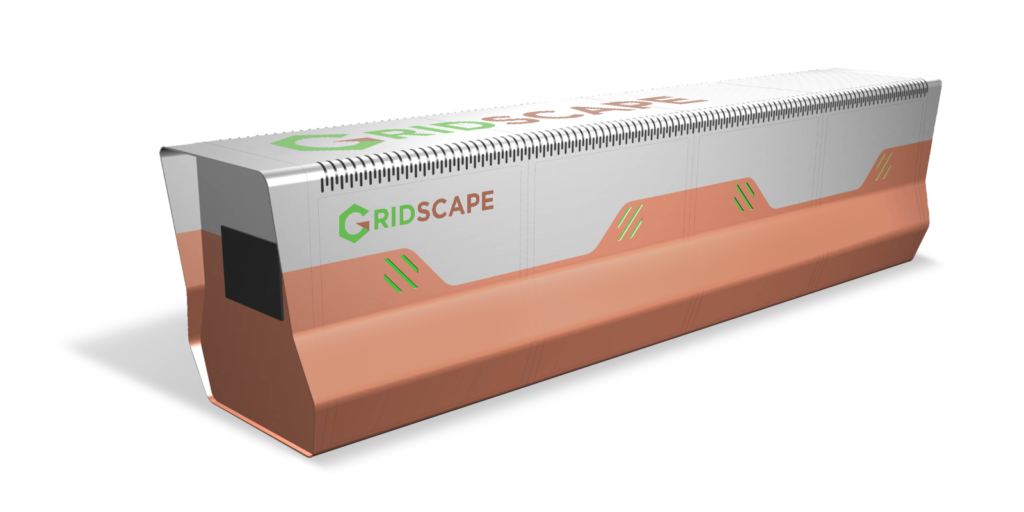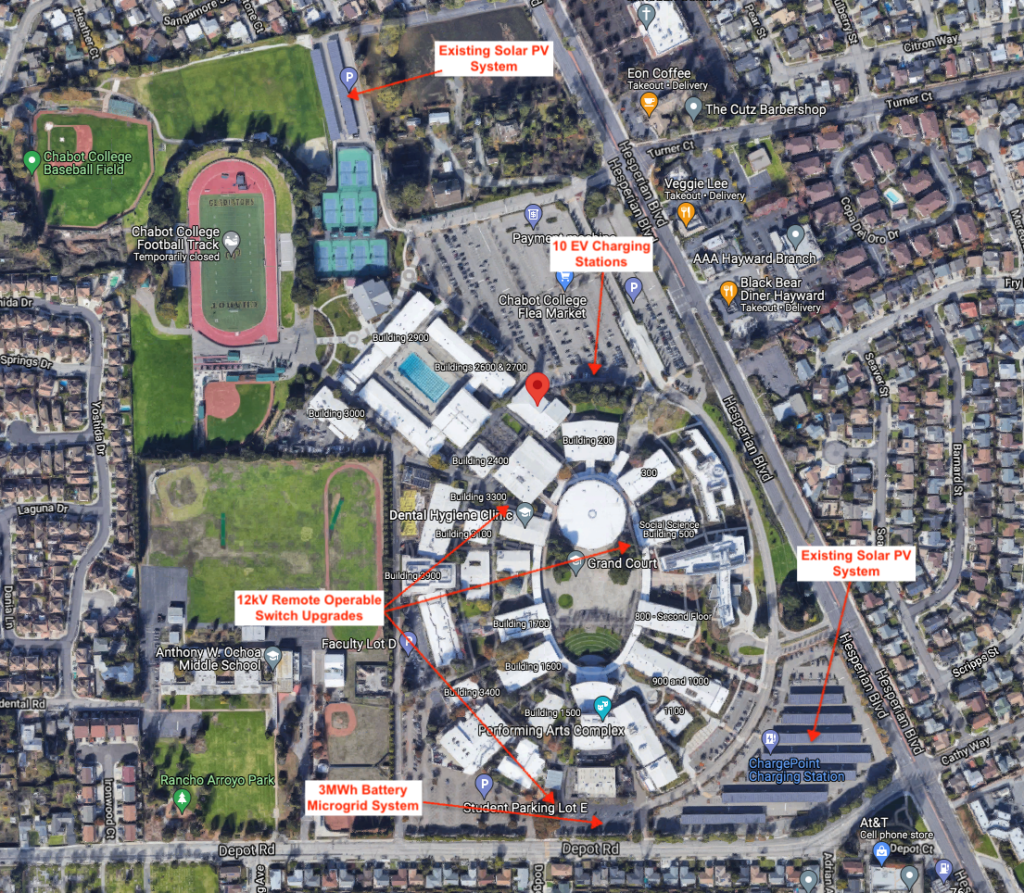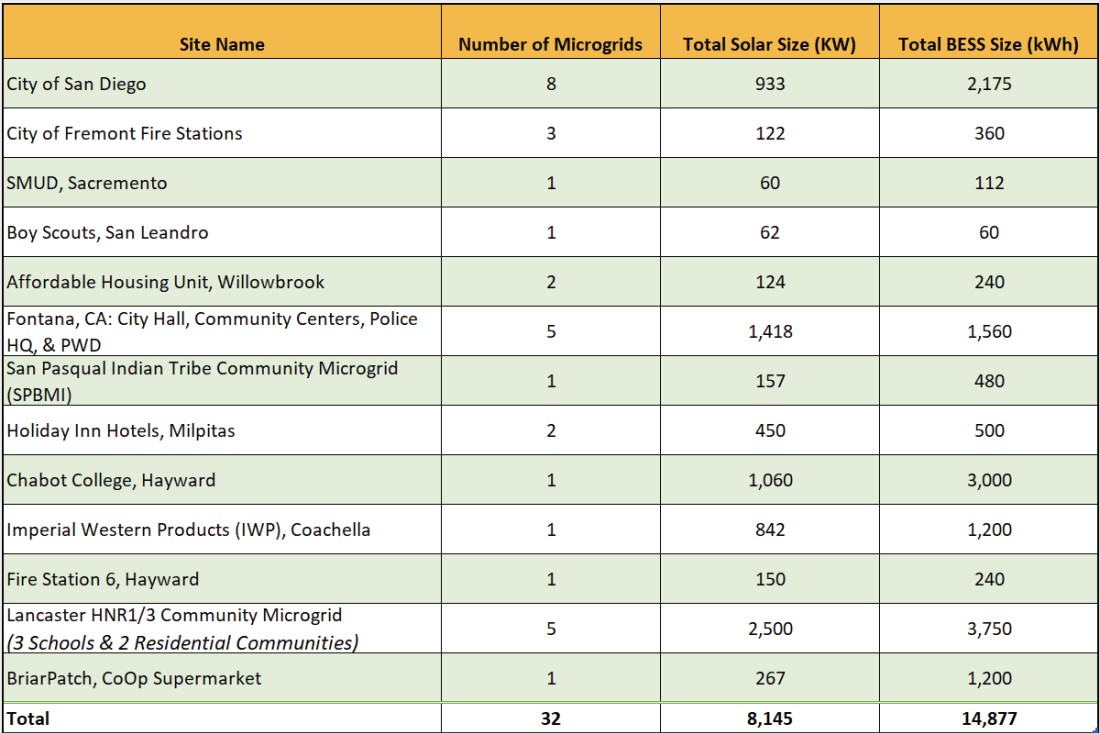CHABOT
Good for the campus, good for the planet
Chabot College is a public community college in Hayward, California. It is part of the Chabot-Las Positas Community College District. Founded in 1961, Chabot College offers educational programs and experiences for students to succeed in their education, progress in the workplace, and engage in the civic and cultural life of the community.
Many campuses across the country are aiming to be carbon neutral in the next couple of years.
In order to attain these goals, many campuses are trying to find ways to reduce their energy consumption through efficiency upgrades and clean energy initiatives to encourage energy conservation habits and microgrids can help campuses achieve exactly that.
What exactly is a microgrid?
A microgrid is a self-contained power system that supplies electricity to a specific geographic area, such as a college campus, medical complex, shopping mall, or neighbourhood.
One or more types of distributed energy (solar panels, wind turbines, cogeneration, generators) are used to generate electricity within microgrids. Furthermore, many new microgrids have energy accumulators, which are often batteries. Electric vehicle charging stations are also available.


Project Description
Gridscape is deploying a Microgrid System at the Chabot College in Hayward, CA, and upgrading its 12 kV infrastructure to provide power resilience to any of the 25 buildings in the campus. This project is partially funded by a grant from California Energy Commission. The project includes 3 MWh of energy storage system, five new remote operable switches, utility interconnection and 10 new EV charging stations. Further, there is an existing 1MW solar array that will be connected to the microgrid system.
1
The project will save approx. $205,378 in energy costs annually and the estimated value of resiliency (VoR) is $348,882.
2
The project will also offset 847 MT of GHG annually.
3
The project will reduce the peak demand and will contribute to additional cost savings.
Workforce Development & Green Jobs Training
The project is spurring a collaboration between Gridscape, Chabot College with help from Columbia University on development of a certification program designed to train future workforce on green jobs and internships.
Design
The project will be based on the system design and architecture with minor alterations as shown in following figure.

As of now, the project is in design phase, and it will be ready for DSA review by the end of November 2021.

Gridscape Overview
Gridscape is the largest developer of small to mid-sized solar microgrid product and technology in California. It is focused on deploying state of the art Microgrid integrated with EV charging solutions aimed at reducing overall energy cost for a site and providing backup clean emergency power during PSPS or other power disruption events. It has been awarded several CEC grants to design and deploy cost-effective, standards-based solar emergency microgrids at fire stations, municipal buildings, and other C&I customers. Gridscape team has extensive experience in deploying highly efficient and integrated smart grid hardware and software solutions in EV charging and renewable solar, storage and microgrid systems.
Unlike traditional microgrid developers, Gridscape employs a holistic product-centric, artificial intelligence (AI) based software-driven approach to designing, deploying, and managing microgrids. It also integrates Electric Vehicle (EV) charging and other controllable loads into its solution. Through its broad partnerships with various Tier 1 and Tier 2 financiers, energy storage manufacturers and other renewable energy product providers, it leverages the best-in-class mix of technology and finance to provide maximum return on investment to customers.
Gridscape EnergyScopeTM Dashboards

Gridscape’s solution is unique, and it differentiates from traditional systems in the following manner.
Product Centric Approach (vs Project Centric Methodology) for scalability, maintainability, and longevity of microgrid assets.
Software driven architecture resulting in no technology obsolescence and ability to adapt to changing PG&E tariffs and distribution grid conditions.
Dynamically configurable. That is, an ability to change the microgrid operating modes on demand.
Energy Information System: A cloud-based distributed energy resource management system (DERMS) that includes
1
a smart AI-based energy management and optimized load and generation dispatch; and
2
a very powerful visualization dashboard for accessing real time and historical data about PV, Storage and EV charging stations.
Inherently Integrated with EV charging infrastructure
Full Energy Management including demand charge reduction, TOU arbitrage, grid services Interconnected network of microgrids
The following is a partial list of the solar microgrid projects deployed or in the process of being deployed by Gridscape in 2021.


